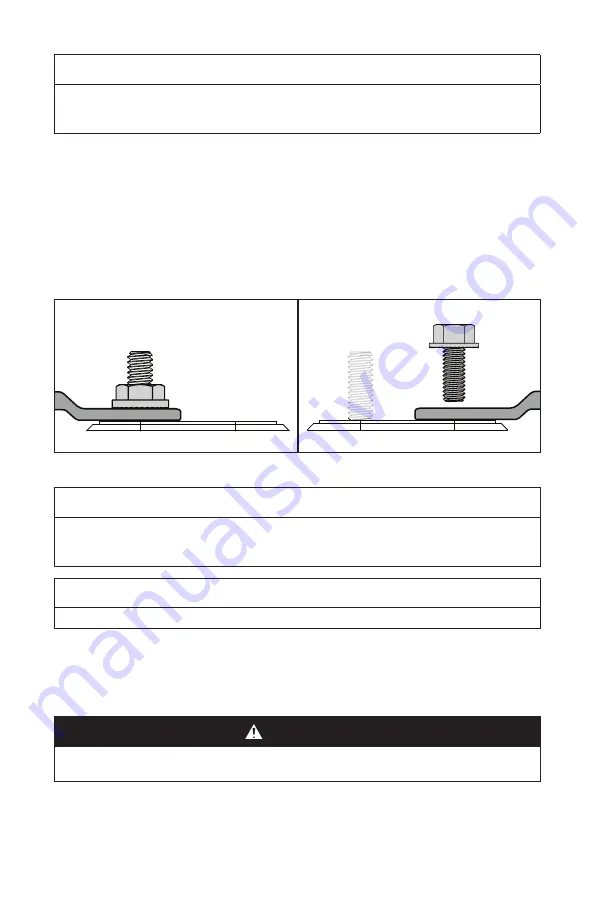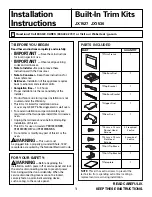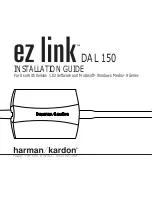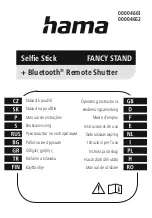
17
NOTE
Local electrical code in your area may require both positive and negative DC
disconnect switches. Always refer to the applicable code and check with authority
having jurisdiction to confirm local requirements.
8.5 Terminal Connections and Hardware
The terminal connections and hardware should meet the following requirements:
1. Connect to the battery terminal.
All cable lugs must be in direct contact
with the battery terminal deck. Do not put washers between the terminal
deck and cable lug.
2. Use the proper torque.
Use a torque wrench to properly adjust terminal
hardware torque. Periodically check to ensure torque is correct.
Stud Connection
5/16"-18 Thread
(Supplied with battery)
Insert Connection
5/16-18 5/8''
Flange Bolt
(Supplied with battery)
Figure 5. Correct Terminal Installation.
NOTICE
Failure to torque up to specification may increase resistance and lower voltage,
leading to burnout of the terminals and voiding the warranty. Torquing up over the
specification may cause the battery casing to crack, voiding the warranty.
NOTE
Without exception, a product experiencing terminal burnout will not be warranted.
8.6 Single Battery Installation Procedure
Equipment must be installed following the standards set by the local authority
having jurisdiction.
CAUTION
FIRE HAZARD:
Undersized cables can become hot and may potentially catch fire.
Failure to follow these instructions can result in minor to moderate injury.
Battery cables (battery to load and battery to charger) must meet the following
requirements to optimize performance:
1. Minimum cable lengths.
Select a location that minimizes the length of
battery cables to reduce voltage drop from the impedance.












































